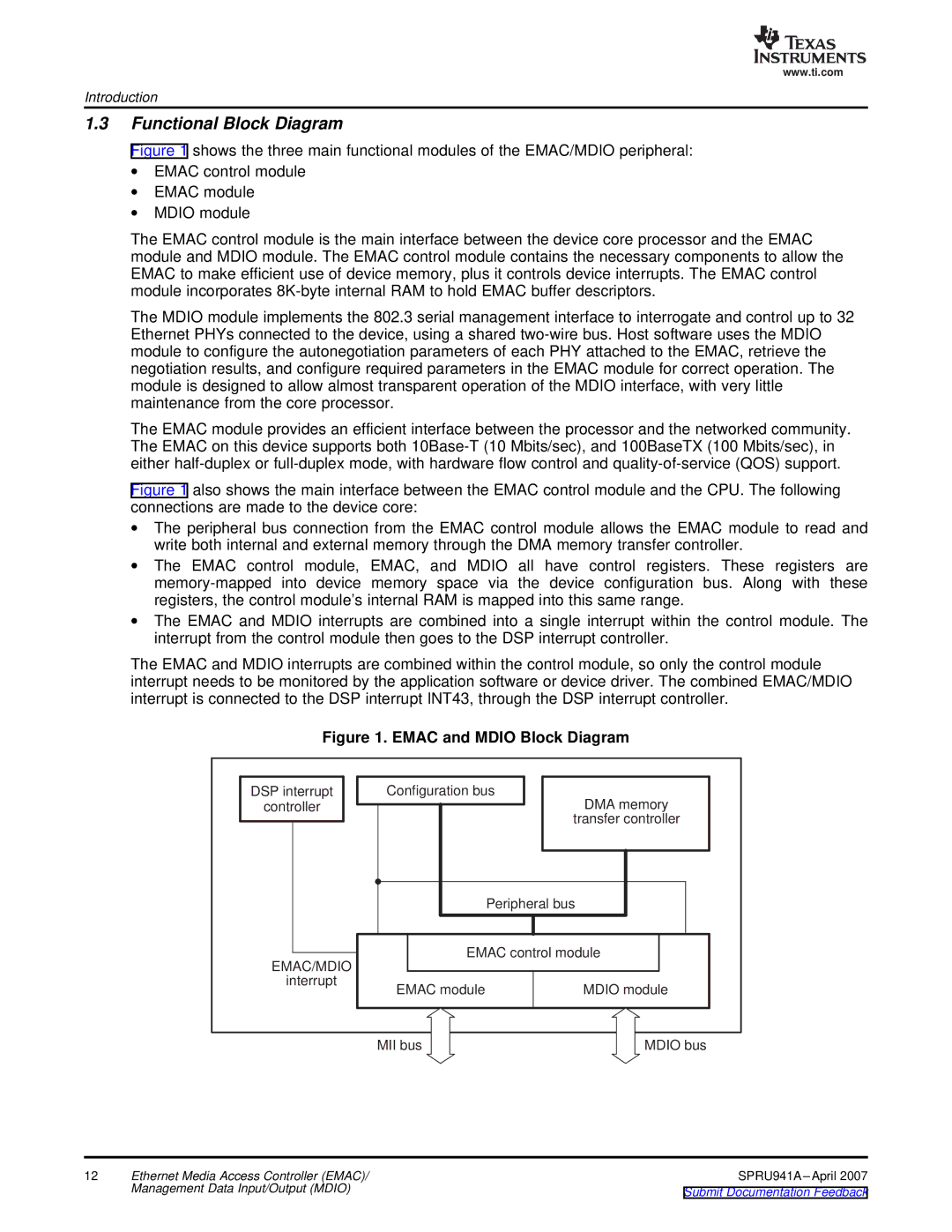
www.ti.com
Introduction
1.3Functional Block Diagram
Figure 1 shows the three main functional modules of the EMAC/MDIO peripheral:
∙EMAC control module
∙EMAC module
∙MDIO module
The EMAC control module is the main interface between the device core processor and the EMAC module and MDIO module. The EMAC control module contains the necessary components to allow the EMAC to make efficient use of device memory, plus it controls device interrupts. The EMAC control module incorporates 8K-byte internal RAM to hold EMAC buffer descriptors.
The MDIO module implements the 802.3 serial management interface to interrogate and control up to 32 Ethernet PHYs connected to the device, using a shared two-wire bus. Host software uses the MDIO module to configure the autonegotiation parameters of each PHY attached to the EMAC, retrieve the negotiation results, and configure required parameters in the EMAC module for correct operation. The module is designed to allow almost transparent operation of the MDIO interface, with very little maintenance from the core processor.
The EMAC module provides an efficient interface between the processor and the networked community. The EMAC on this device supports both 10Base-T (10 Mbits/sec), and 100BaseTX (100 Mbits/sec), in either half-duplex or full-duplex mode, with hardware flow control and quality-of-service (QOS) support.
Figure 1 also shows the main interface between the EMAC control module and the CPU. The following connections are made to the device core:
∙The peripheral bus connection from the EMAC control module allows the EMAC module to read and write both internal and external memory through the DMA memory transfer controller.
∙The EMAC control module, EMAC, and MDIO all have control registers. These registers are memory-mapped into device memory space via the device configuration bus. Along with these registers, the control module’s internal RAM is mapped into this same range.
∙The EMAC and MDIO interrupts are combined into a single interrupt within the control module. The interrupt from the control module then goes to the DSP interrupt controller.
The EMAC and MDIO interrupts are combined within the control module, so only the control module interrupt needs to be monitored by the application software or device driver. The combined EMAC/MDIO interrupt is connected to the DSP interrupt INT43, through the DSP interrupt controller.
Figure 1. EMAC and MDIO Block Diagram
DSP interrupt | Configuration bus | |
controller |
| DMA memory |
|
| transfer controller |
|
| Peripheral bus |
EMAC/MDIO | EMAC control module | |
|
| |
interrupt | EMAC module | MDIO module |
| ||
| MII bus | MDIO bus |
12 Ethernet Media Access Controller (EMAC)/SPRU941A
Management Data Input/Output (MDIO) | Submit Documentation Feedback |
|
